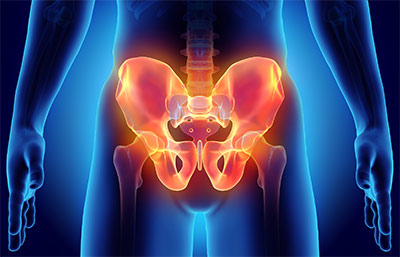
When we look at all the information on the hips out there, one of the things we see repeating itself is the idea that external rotation alone is enough to improve hip health.
While many people do struggle with external rotation in the hip, the problem starts when there’s a single-side solution for a whole joint. The hip has tons of mobility and range, and this alone doesn’t fix your whole hip.
Today we’re going to be discussing the issue with this approach, how other ranges are neglected, and what you should do instead!
Hip External Rotation Culture: Well-Intentioned Half-Truths
The simple fact is that, yes, you probably suck at externally rotating your hip. This is pretty much everyone in 2020 because chairs and sitting make up way too much of our time as-it-is.
In response to this, and rightly so, proper external rotation has received some popularity. We talk about this ourselves form time to time because it’s an important muscular and neural movement/skill to practice.
This does address a number of common issues, so we aren’t complaining about it -it’s a tonic to some of the problems that we deal with. However, it’s a partial solution to a complicated and acquired problem, which should be addressed with comprehensive and patient work.
The reality that we’re discussing today is that external rotation alone will not secure the hip and its function. It’s a start, but there’s a lot being overlooked.
The Structure of the Hip
The hip is the second most mobile joint in the body, following only the shoulder. Naturally, it has greater stability in exchange, which is crucial since it is constantly loaded, while the shoulder isn’t.
The range of the joint, then, includes a lot of external and internal rotation, abduction-adduction, and extension-flexion. These are the healthy ranges, too, there’s not a pathological direction – unlike hinge and semi-hinge joints.
The hip itself can comfortably do almost any of these in combination, though of course there is a limited amount of range to each. Hip external rotation tends to be paired with abduction, and these are the two areas where we do most work (through glute training and proper squatting technique).
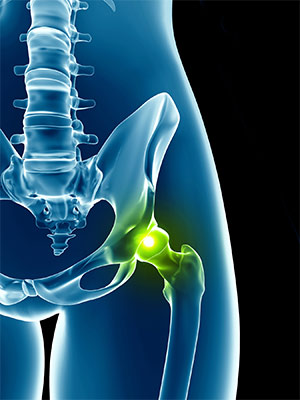
Overlooked Internal Rotation
One of the things that we dislike about the current discussion of the hip and its’ proper movement is the idea that external is good and internal is bad. This has grown out of the problems associated with seated/weak mglute posture and it makes sense.
However, it’s not that simple; a healthy hip is one that can move with control through its’ entire range of motion. Hip problems don’t come from internal rotation itself, hip problems come from inhibited or non-optional positioning.
Remember: inability to externally rotate is the problem, not internal rotation itself. It’s chronic inhibition that’s the problem!
As a result, proper internal rotation control has been neglected almost entirely, which is one of the key factors in hip health preparation. What we want to see is the combination of improved external rotation mobility/strength and proper internal rotation strength and control!
Being able to control your knee in both directions is where health and performance are optimal. This offers proper mobility while also producing stable and plentiful musculature around the joint to absorb force, as well as strengthening all of the connective tissues of the hip.
The Benefits of Two-Direction Hip Rotation Control
Control, Stability, Injury
At a basic level, control is the key to health in the joints. This tends to come from practice in movement and developing musculature around the joint – both of which come from conscious training.
On top of this, the proper development of balance in the joint produces effective joint balance and spacing. This is an issue of where the ball of the hip sits in the hip capsule, and the capsule itself in the overall joint.
Joint Space and Hip Rotation Risks
The hip is complicated, but the point is that muscular imbalance, movement inhibition, and compression of key joint spaces come hand-in-hand. Single-sided solutions to a joint tend to just push the stress from one side to the other, and this is clear in the hips, where piriformis syndrome can occur.
As before, the answer is balance, not slamming in more external rotation. The control of both directions also supports control in each, as antagonists are always important for good movement, where they reduce joint impact and improve voluntary control.
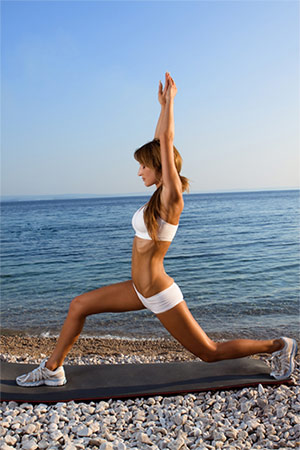
Hip Control and Lower Back/Hip Position
On top of this, the best possible hip control produces the best possible change in the lower back and hip complex itself. This is an area that is susceptible to really debilitating injury and pain, so naturally it’s worth putting time into – injury prevention being superior to injury management.
The control of the internal-external rotation produces better hip position and tilt control, improved buttock gains, and a reduced risk of freak accident/injury. It prepares you for life, on top of all the other benefits!
Basic Mobility and Locomotion
Naturally, being able to walk is pretty great. It is something we tend to take for granted in youth and miss in later life – especially when dealing with degenerative conditions, for example.
In basic locomotion, the ability to internally and externally rotate the hip is crucial. You’re probably not going to be able to walk without moving the hip through various positions – and the result is the need for both internal and external rotation.
Improved control and strength in these movements will support long-term independent mobility, which is one of the best quality of life factors for older people. Staying active for longer is a hell of a benefit – especially with the prevalence of hip injury/replacement, and lower back pain in older people.
The long story short is that hip rotation is a two-directional process and external rotation work without internal rotation work is misguided. It’s a way of addressing one problem but doesn’t solve the whole thing or set you up for the kind of long-term health and performance you may want.
Training one side of your shoulder contributes to injury, and so does one side of your hip. This is a general principle of balanced training you should apply to everything: strength in all ranges means less injury at any range!
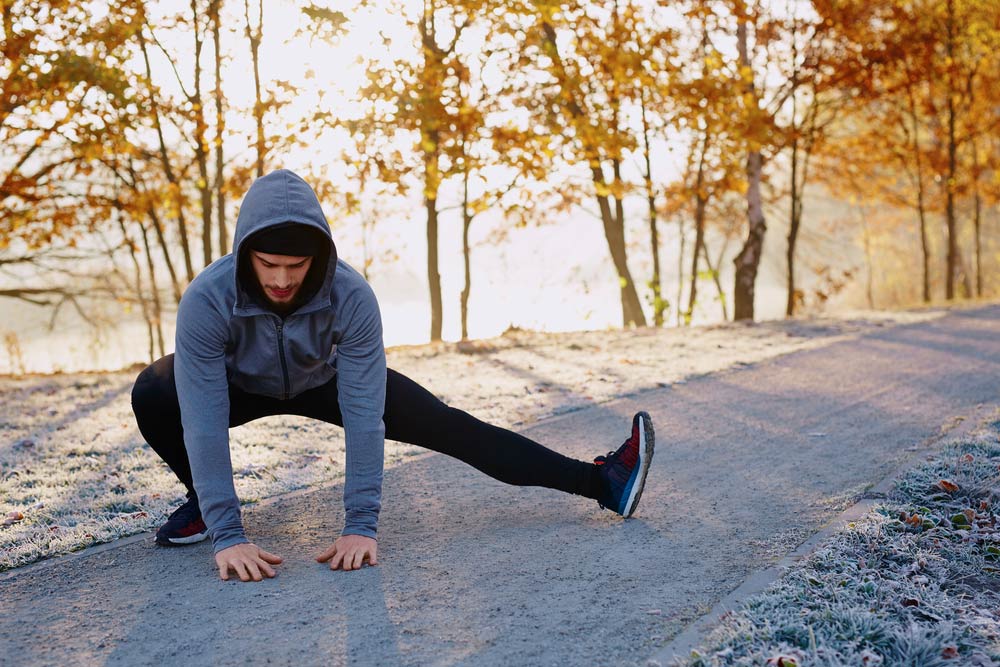
Other Hip Stuff from EFI
We love talking about hips because there are a lot of ranges that need work and they interact with the core, spine, and knees. These are obviously all relevant for injury risks of their own as well as being the most commonly loaded joints.
The summaries here are short versions of whole articles we’ve put together so, if you’re looking for other hip health wisdom, dive into the whole article.
1. Hip Flexors
These are often tight and weak, the worst possible combo. Pliability and then strength in all positions are great goals to have as they strengthen the overall hip complex, improve control, and reduce postural problems.
The hip flexors, like the rotation of the hip, is usually inhibited due to a combination of sitting and inactivity. Proper mobility and strength here contribute a ton to posture, movement quality, and long-term injury risk.
Our article on hip flexor training is where we’d recommend looking for this, and offers some practical hip flexor training.
2. Hip Extensors
While big butts are popular right now, it seems that proper hip extension still isn’t. We’re fans of better quality in all things and there’s no reason you can’t get healthier while you work on strength and muscle in the hip region.
Proper hip extension does require pliability in the hip flexors, so we recommend combining the two, and ensuring a proper foundation for each. They work together beautifully (remember, both sides of a joint is best), and it helps to strengthen long-term posture and hip resilience.
Primarily, get pliable hip flexors, get your glutes and surrounding muscle moving, and practice your hip thrusts/bridges!
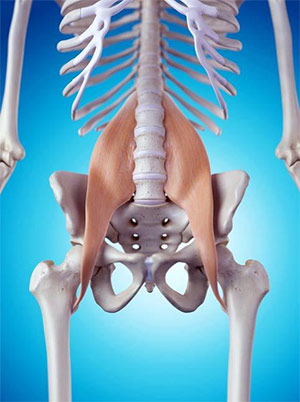
3. Lateral Movement
You probably suck at lateral movement but so does everyone. It’s something we tend to neglect in gym routines and life more generally.
It’s a problem because the adduction and abduction of the hip is a difficult movement pattern to train, and ends up weak and inhibited. The result then is weak lateral stability which – more often than not – shows up in knee injuries.
Alongside poor internal-external rotation, weak abduction-adduction places strain on really common injury sites in the knee. The IT band itself takes strain from this weakness, while the medial and lateral cruciate ligaments are very susceptible to injury during weakness and lack of control in the abduction-adduction of the hip.
Final Thoughts
The hip is a complicated joint and requires a fair amount of work, but smarter work helps us get the most results from the least time and effort. Properly balancing each of the directions and movements is the smartest training for any joint – and especially one as important as the hip.
We recommend sticking with these principles for all movement, and put it into practice wherever you can. Start with proper internal-external rotation practice, because this is one of the best ways to set a foundation for the rest of your hip training.
Start with thee basics and work out from there – we welcome any questions, so if you’re still curious we’d love to hear from you! Comment below or send us a direct message through any of our contact details!







